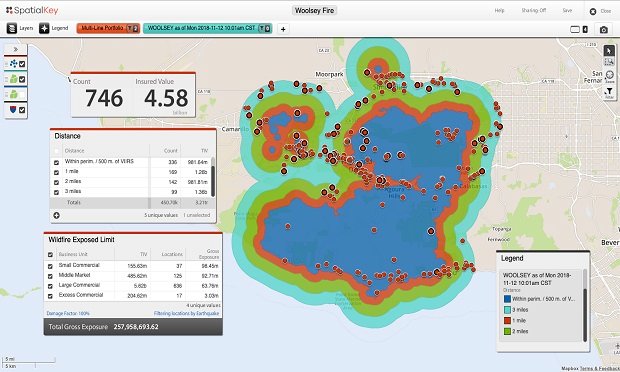It's difficult to predict what the personal auto insurancemarket will look like by the turn of the next decade, but evenconservative estimates indicate telematics and usage-basedinsurance (UBI) will become a catalyst for change, according to arecent Strategy Meets Action research paper.
|Richard Welch, a former insurance CEO, is a guest author of theSMA report along with SMA partner Mark Breading, believes that evenwith just 10 percent of the market in 2020, that still means 25million cars will be insured through some type of UBI program.
|“That has strong implications for the rest of the insurancemarket,” says Welch. “If even 10 percent [of policyholders] moveinto this space it will have a significant disruptive impact on themarket as a whole.”
|Currently, the lure for customers appears to be discounts beingoffered when a policyholder agrees to use a UBI product. Welchdoesn't believe carriers can sustain such largesse indefinitely,though.
|“The costs (for insurers) of setting up and running a UBIprogram are significant,” he says. “It is not possible at currentcosts to be able to profitably offer discounts across all segmentsof the market. As costs continue to fall, more of the market willbe in a position where a company can [offer UBI] profitably.”
|The potential to offer savings to drivers is significant,explains Welch, because one of the promises this technology offersis a change in driver behavior, which eventually couldsignificantly drive down loss costs for the carrier.
|“The other thing about discounts and reducing costs is it's allabout a better understanding of risks or more finite segments,”says Breading. “This gives insurers the opportunity to identifysegments, reduce costs, and still be profitable. As that happens,that's the catalyst for changing the marketplace.”
|Personal auto insurers are positioning their companies to dealwith the change from traditional underwriting to telematics andUBI, according to Welch.
|“If you look at our survey, it indicates that about 70 percentof companies have a UBI program in place, are piloting one or areat least planning for the future,” he says.
|Carriers that fail to keep up with the market changes run therisk of adverse selection. Welch has performed some modeling tounderstand the impact of adverse selection on the market andestimates that if 20 to 25 percent of the market is fully engagedwith UBI, it will become essential for the rest of the market tojump in so they don't end up with an adversely selectedproduct.
|“If a significant portion of the market shifts to UBI and themarket becomes dominated by a few large players, it will be toughfor the rest of the market to grow,” says Welch.
|Welch explains it is difficult to make predictions on how thetechnology carriers employ to gather telematics information willplay out. The survey showed the largest percentage of insurersbelieve the technology eventually will be built into vehicles,which means carriers will get their data directly from thevehicles. He points out, though, that such technology will come topass only as new vehicles are built.
|“It's going to take a long time to get there, which means, inthe meantime, there will be a robust market for aftermarketdevices,” Welch says.
|In the U.S., devices that are self-installedby consumers and tie-in to the diagnostic port on the vehicle aredominant. Welch contends the use of smartphones could change thatpattern.
|“Smartphones can do everything you need to get the data run to aUBI program, but there are some challenges associated withsmartphone technology that make underwriters less comfortable,”says Welch. “The promise of the smartphone is there's no hardwareto deploy and it's easy to get it out to a lot of placesquickly.”
|The challenge with smartphones arises from the data received andhow complete it is, points out Welch.
|“There are hurdles that have to be overcome in order for thesmartphone to be a credible UBI device,” he says. “I'm not sure Ican tell you what the answers are to all those issues.”
|Insurers are concerned with the cost of telematics devices, butright behind that is the expense involved with systems integration.Still another issue is the new data that will be collected.
|“At this stage, insurers are using just a tiny portion of thedata,” says Breading. “If carriers begin to use more of thelocation-based information and information about vehiclecharacteristics and driver behavior, imagine collecting all thatstuff every 60 seconds. You are talking about enormous amounts ofdata, but also enormous amounts of insight if you can figure out away to analyze it.”
|Yet another issue is the technology behind UBI, particularly thepatents approved for Progressive and its Snapshot program. Thecarrier has sued competitors such as State Farm and The Hartfordfor what they contend is a violation of Progressive's patents, butProgressive has licensed the technology to Allstate.
|“That battle wages on,” says Welch. “From the interviews we did,the patent issue for mid-size and smaller insurers is significant.There are players intentionally on the sidelines until they getmore clarity about these patent issues, although it's not generallyseen as a long-term problem.”
|Welch reports that Progressive explained during a recent analystcall that they plan to broadly license the technology tocompetitors in 2015.
|“On the one hand you can interpret that they are going to letthe market open, but what is left unsaid is whether they are onlygoing to license a generation behind where they are and will theprice be prohibitive,” he says. “I do think the patents will comedown as an impediment in the next three or four years.”
|Today, Welch believes there are strong indications that fastmovers will earn an advantage over the competition because theywill be able to collect so much data earlier in the UBI process andiron out where the profitable segments are and where to attackthem.
|“Our respondents feel large companies are going to be at anadvantage, but it's also another place to look and see how thingswill change for the future,” he says. “There is a lot of discussionaround whether aggregators are going to jump into this in asignificant way. Driver scores in the future may be sold the waycredit scores are sold today, which would open the market forsmaller companies. ISO and LexisNexis have indicated they areinterested in doing work behind the scenes on such a product.”
|Want to continue reading?
Become a Free PropertyCasualty360 Digital Reader
Your access to unlimited PropertyCasualty360 content isn’t changing.
Once you are an ALM digital member, you’ll receive:
- All PropertyCasualty360.com news coverage, best practices, and in-depth analysis.
- Educational webcasts, resources from industry leaders, and informative newsletters.
- Other award-winning websites including BenefitsPRO.com and ThinkAdvisor.com.
Already have an account? Sign In
© 2024 ALM Global, LLC, All Rights Reserved. Request academic re-use from www.copyright.com. All other uses, submit a request to [email protected]. For more information visit Asset & Logo Licensing.








